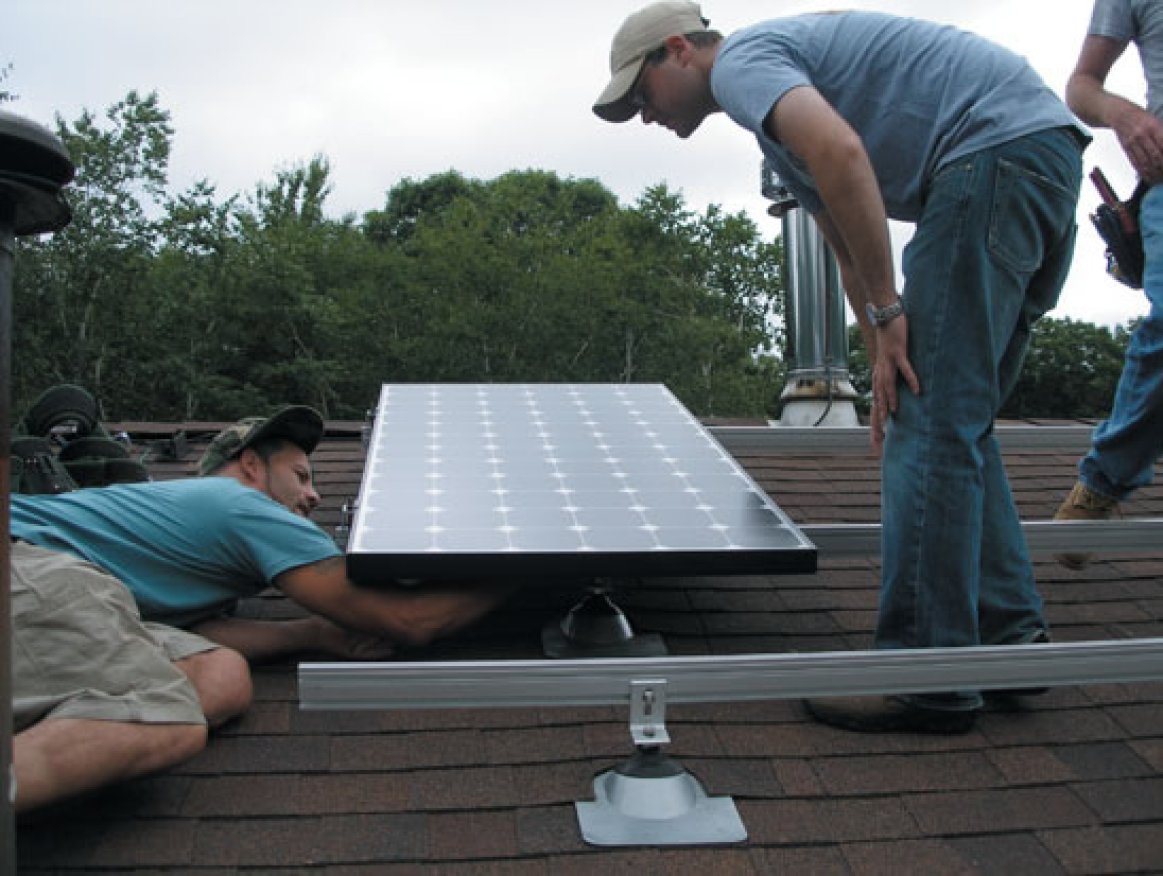

The racking and mounting system of a solar PV installation normally consist of 10% to 25% of the total cost of the installation. However, the related roof maintenance costs are rarely included in the solar PV financial calculations. All the racking equipment requires roof penetration which can lead to water leaks and also may void the roof warranty. To avoid such costly mistakes the solar PV system should be installed according to municipal code and installation manuals.
Thus, installers and homeowners must be cautious in regards to which roof mounting systems they select.
There are four important measures for selecting a roof mounting system:
- The cost of the system: The lower, the better.
- The life-span and reliability: The mounting system must last for at least 25 years. (which is the normal life span of a solar PV installation)
- Ease of mounting: The installation may take a long time relevant to the rest of the project and can require high attention to detail. These circumstances can increase labor costs and may result in improper installation.
- Code compliance: The use of flashings may be necessary for the system to not cause any water leaks or electricity grounding hazards.
I have conducted some brief research on flashings and mounting solutions available on the market. Greentech Renewables carries most roof mounting solutions, so you can do your own comparison here. The below table represents a brief comparison of the flashings and attachments.
Because of the variety of styles and additional considerations necessary, I do not take rails and racking equipments into consideration. That is a topic on its own. The items that I compare are the pieces of equipment between the rails and the roofing, where the actual attachment happens.
|
|
Unirac Aluminum |
Unirac Galvanized Steel |
Prosolar FastJack |
Quick Mount PV |
Schuco ezStand-off (No longer available) |
TTI FlatJack (No longer available) |
| Link to products | click here> | click here> | click here> | |||
| Required Extra Flashing | Flashing for 1/2" - 1-1/8" O.D. shaft | Flashing for 1/2" - 1-1/8" O.D. shaft | Flashing for 1" O.D. shaft | Included | ezFlush-Mount Flashing | Included |
| Required Extra Hardware | Included | Included | Included | Included | Included | 5/16" lag screws |
| Ease of Installation | Easy to Moderate | Moderate | Easy to Moderate | Very Easy | Easy | Easy |
| Code Compliance | Compliant with flashing | Compliant with flashing | Compliant with flashing | Compliant | Compliant with flashing | Compliant |
| Product Cost | Low | Low | Lowest | Medium | Low to Medium | Low to Medium |
Comments
Thanks for the great article. Question. Does the flashing for the solar panel racking need to be installed by a licensed roofer in order to maintain the warranty for the roof?
I believe having the roofer on site during the installation is the most advisable method, so that the roofer can take care of the flashings before the racking is installed.
As long as the installation is made by complying to roof material instructions, the warranty would maintain.
The chapter 15 of International Building Code is reserved for roof assemblies. In the article #1507, it mentions "flashing and counter flashing shall be provided in accordance with the manufacture's written installation instructions, and where of metal, shall not be less than 0.019 inch (0.48mm) (No, 26 galvanized sheet gage) corrosion- resistant metal"
Thanks for this clarification as there is a lot of confusion around existing roof warranties as it relates to installing solar racking.
I've found the IBC (the building code) for California online.
It's a 60MB .pdf document with 766 pages, takes time to download, but very helpful reference. The instructions about water proofing are under section #1503.
You have mentioned very important points. I have heard about this topic but this is the first site I got to read about this topic. Solar PV roof mount will help to reduce use of electricity and it will save the energy.
Thanks a lot for this post. I learned a lot from it. First of all, your roof plays a huge role in the appearance of your home or building. The roof is often the first thing people notice about a house. A poorly maintained roof can be an instant to turn off to a visitor, and more importantly, it can bring down the value of your home.